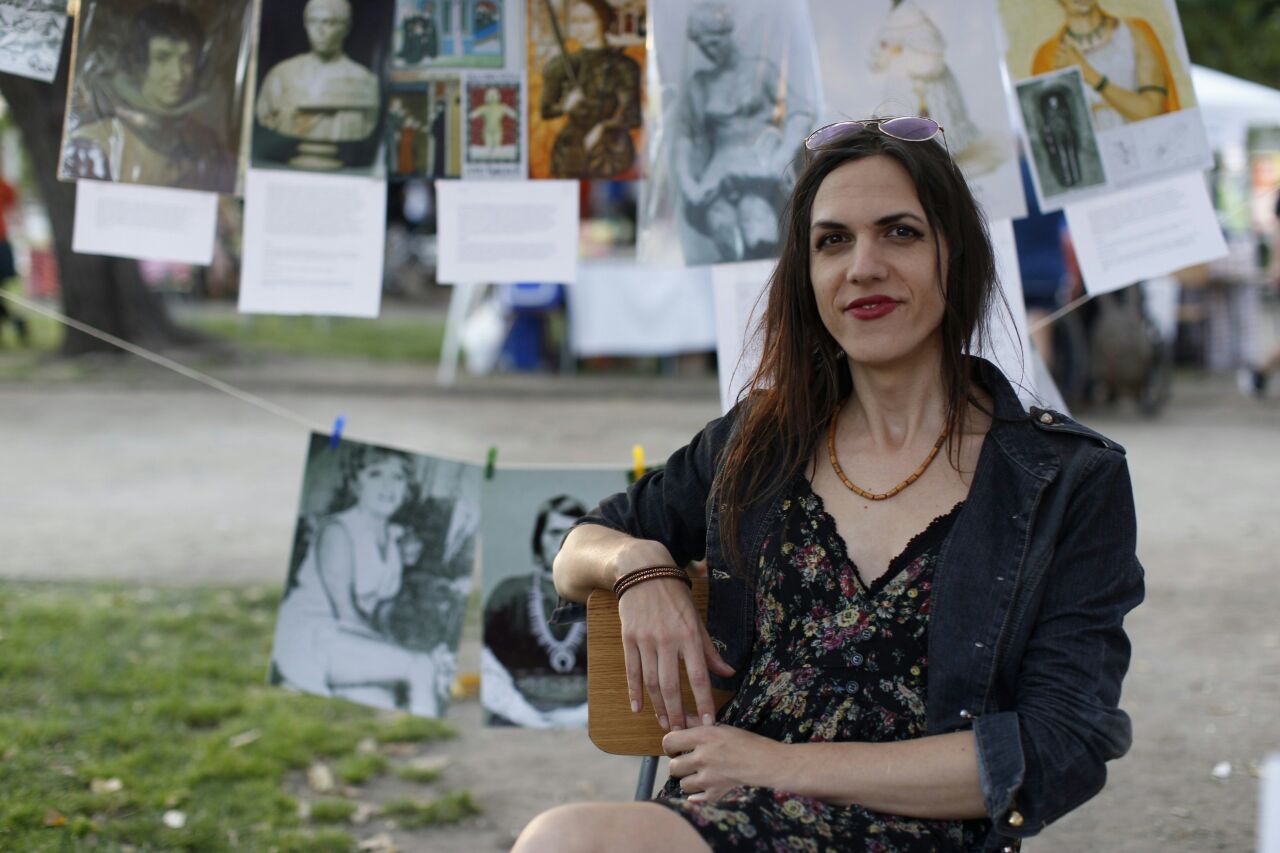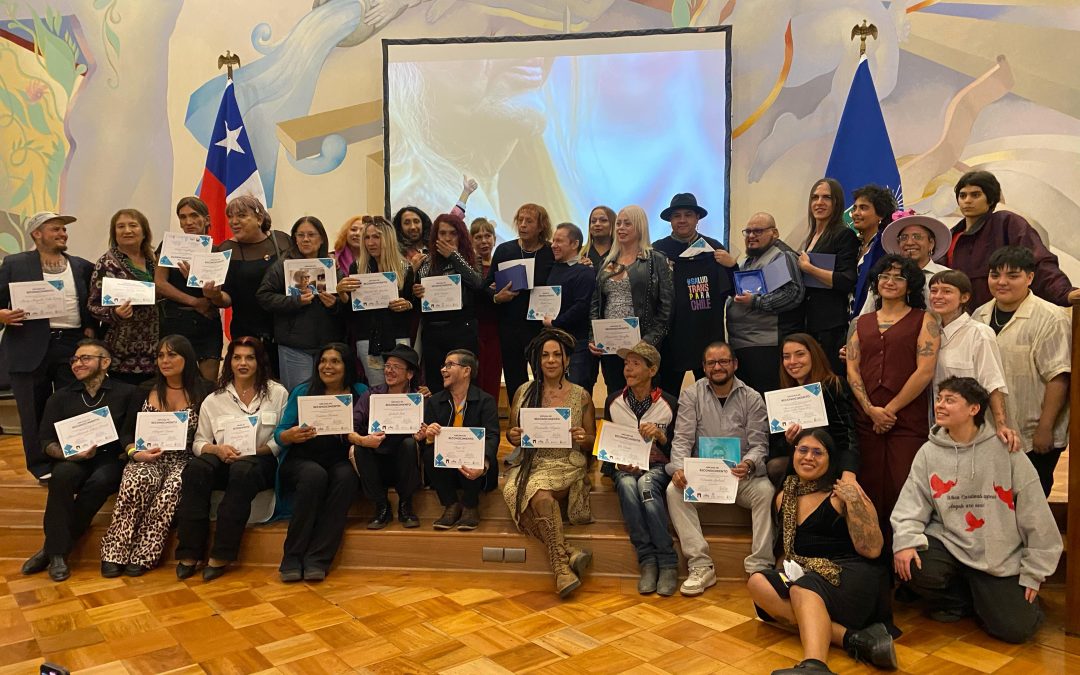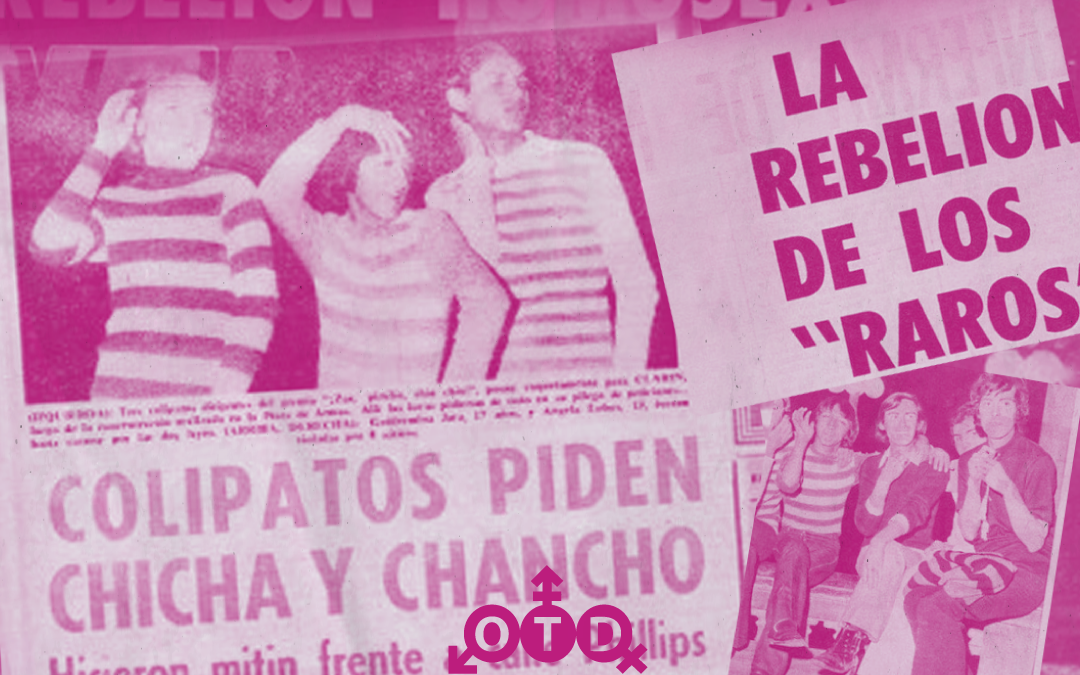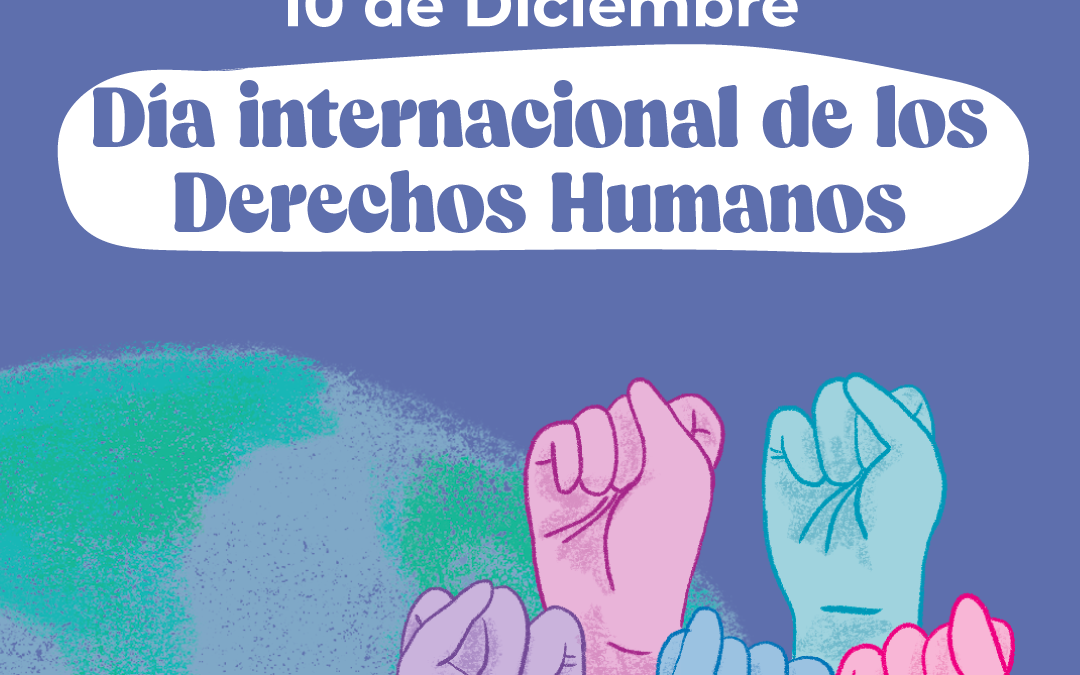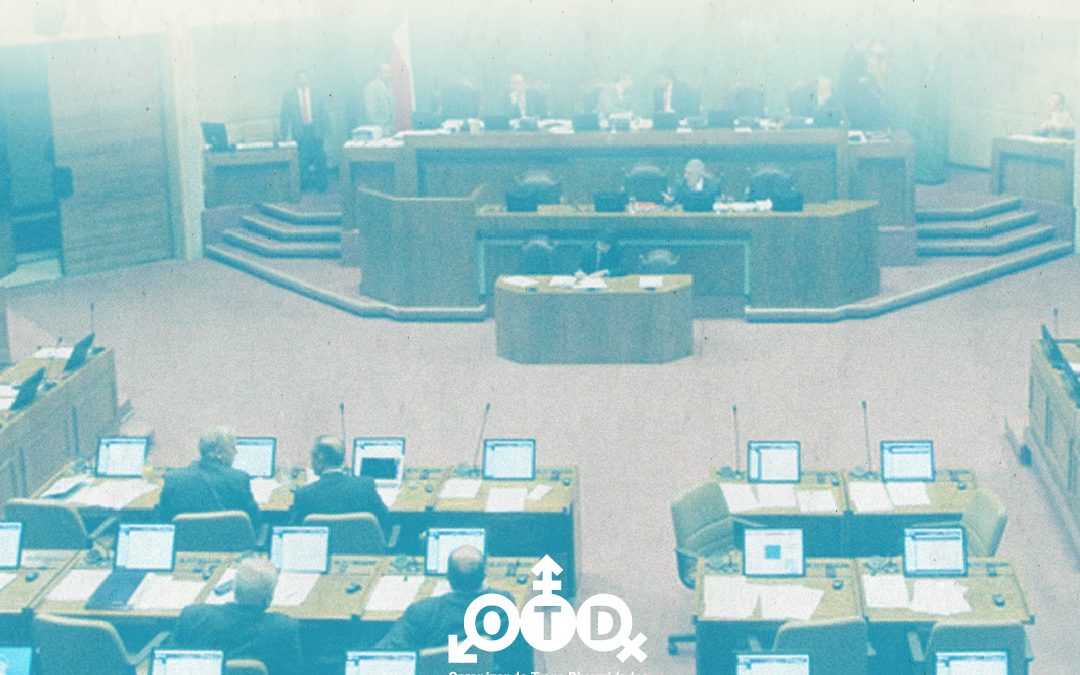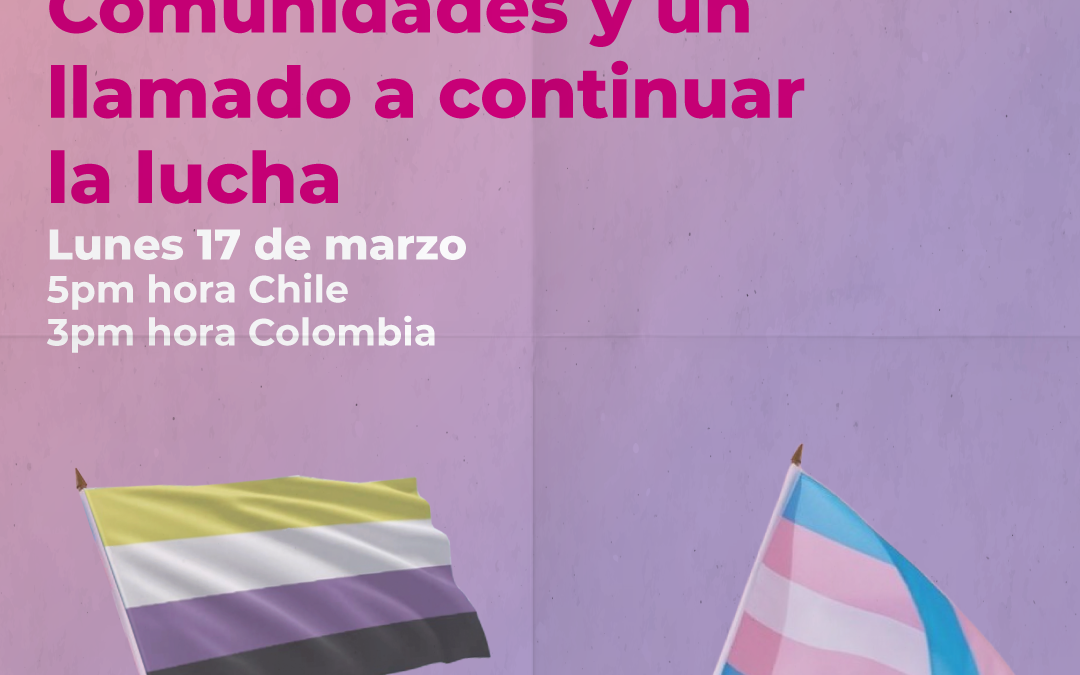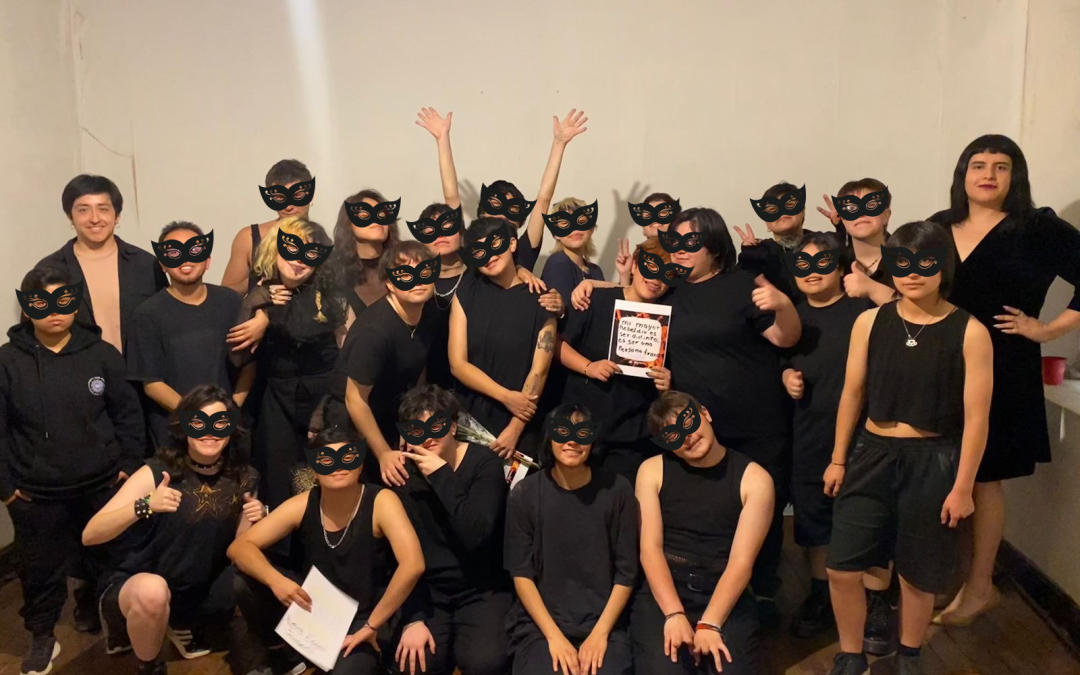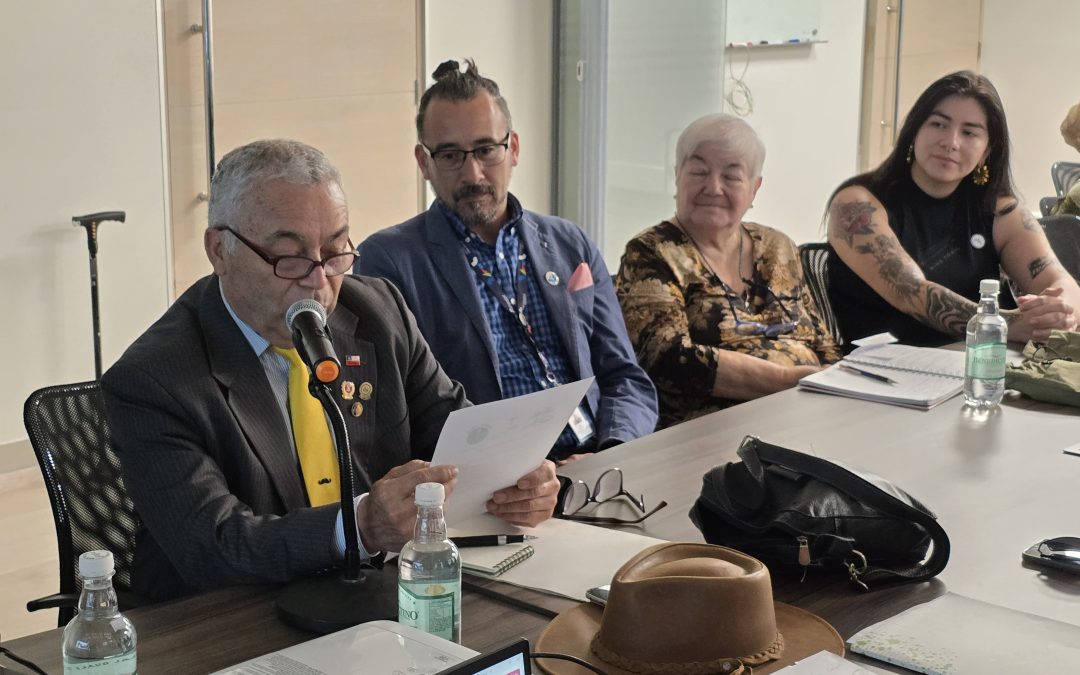Kris Córdova es profesore y miembre del directorio de OTD Chile, el día 27 de noviembre expondrá por segunda vez su investigación sobre las diversidades sexuales y de género en la historia, “De shamanes a travestis”.
Su introducción al tema fue cuando comenzó a preparar, junto al equipo de Oteduca, charlas sobre la temática trans que expusieron en diferentes instituciones durante éste año. Desde ése momento no se detuvo en su investigación sobre cómo han habitado diferentes expresiones de género en la historia de la humanidad.
“Empecé a buscar y me fui sorprendiendo con todas las cosas que encontré. También me fue generando una sensación de pertenencia, identificación, porque lo trans no es de ahora, personas que han transgredido el género ha habido siempre y me hizo sentir una raíz para atrás”, afirma.
Desde los Machi Weye mapuche, nombre que se les daba a les machis de cuerpo masculino, que encontró en la investigación de Ana María Bacigalupo, hasta les berdache, denominación francesa a las personas de género no binario que vivían en Norteamérica, fueron los hallazgos que cimentaron esta charla y exposición fotográfica.
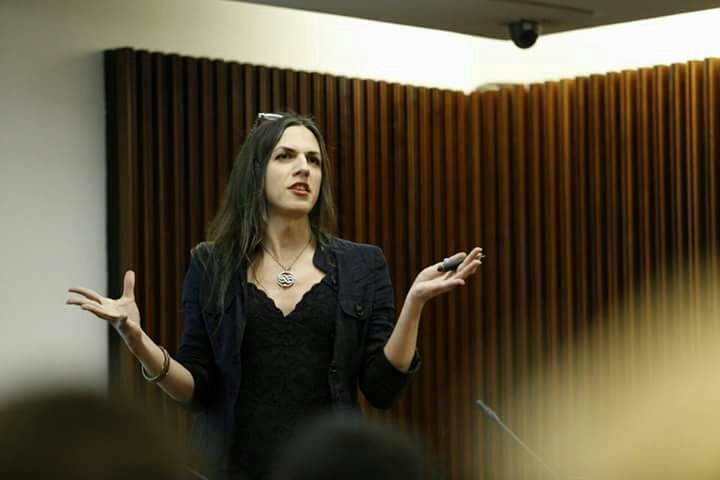
Para Kris, como activista trans no binaria, el descubrir a estos personajes fue poner en evidencia que el género nunca ha sido rígido. “En general en las culturas de América, no en todas, pero sí en muchas, hay personajes que pertenecen a un tercer género. Cuerpos masculinos que toman características de lo femenino o al revés, todos son distintos, tienen funciones diferente y no es raro verles asociados a la actividad chamánica, como mediadores”.
La persecución y eliminación de estos primeros “chamanes” son el testimonio de cómo los colonizadores españoles fueron mermando las diferencias culturales de los pueblos precolombinos.
Aunque Kris resalta que es preciso no idealizar el pasado, si se constata la cohabitación con un tercer género. Existía lo masculino y lo femenino, pero también estaban estos personajes que podían aunar características de ambes y había un espacio social permitido para elles. Pero con la implantación de las religiones monoteístas, especialmente el cristianismo, se perjudicó la continuidad de estes primeres personajes transgeneristas que con el mito de Adán y Eva van sepultando la idea de que otra identidad es posible.
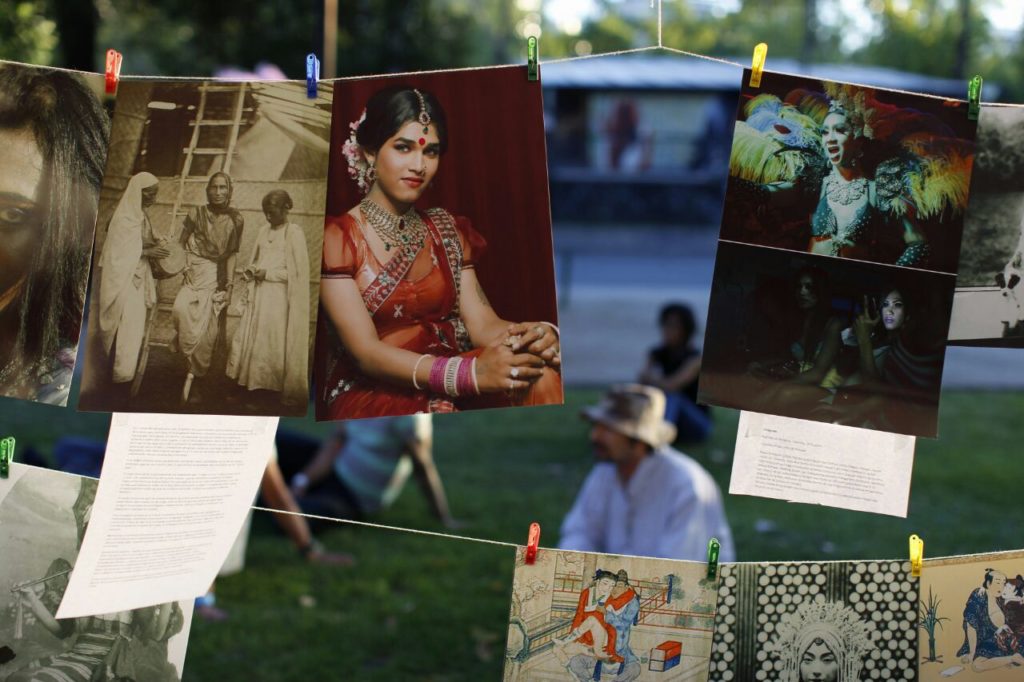
Foto: Karina Paz
“La religión tiene esto de que lo que nosotros creemos es la verdad y los demás están equivocados, entonces se encontraron con otras creencias donde habían estos terceros géneros, con sacerdotes que ejercían una prostitución sagrada o que tenían estas expresiones de género más ambiguas”, explica. La posterior colonización de estas ideas occidentales en el resto del mundo terminó por transformar muchas culturas antiguas y sembrarlas de homofobia y transfobia.
Pero además de las creencias morales, se sumaron factores políticos como el ascenso de los privilegios masculinos de la cultura patriarcal. “Muchas veces la división de género significa también división de privilegios. Entonces éste género tiene ciertas tareas y éste tiene otras, esta división muy pocas veces ha sido equitativa”. Las separaciones se comenzarán a hacer más palpables con la creación de los Estados como organización nacional, donde se tiende a estandarizar la vida de sus habitantes, aunque también existían en culturas tribales.
Kris resguarda el trasfondo de su investigación, pues quiere ir más allá de dejar en evidencia que siempre han existido personas trans en la historia, ya que es imposible sostener que es el mismo sentir individual de hoy. “Es difícil saber cómo se sentían en el pasado. Las identidades se van moldeando de acuerdo a las posibilidades que tienes en tu contexto, tú utilizas el término que existe para adecuarte”. Aunque reconoce que la falta de bibliografía sobre las expresiones de géneros diversas no son casualidad. “Hay temas que por la constitución moral y religiosa de la sociedad no se abarcan o se estudian muy poco”.
Como licenciade y profesore de biología no evade el tema de la genética, a pesar de lo difícil que ha sido para la comunidad trans la patologización de sus identidades. “La genética no determina quién serás, pero establece ciertas tendencias, que dependiendo del medio ambiente y el contexto socio-cultural pueden expresarse diferencialmente. Si existe un elemento biológico significa que ha estado siempre, no es que salió ayer, porque la evolución es bastante conservativa. Entonces, si sumas el análisis histórico, cultural y biológico te encuentras que en esas sociedades antiguas lo que se hizo fue encontrar un espacio para adecuar a estos individuos y darles un espacio funcional”.
Un espacio que hoy se abre a través del activismo y de la negociación con los Estados y Gobiernos nacionales que permiten o cierran posibilidades a les trans, pero que con éste tipo de investigaciones es imposible de obviar: el género siempre ha sido lábil. “Lo más poderoso de encontrar conductas transgéneras en la historia es evidenciar que la identidad ha sido menos binaria que hoy, por lo tanto es una herramienta más profunda y poderosa para criticar todo el sistema de género que existe. El pasado tiene mucho que enseñarnos sobre cómo las sociedades han lidiado con la diversidad y cómo se articulaba con el resto”.
Volver al pasado y usar la historia a tu favor para que se eliminen los nichos identitarios es uno de sus objetivos con éste trabajo inédito. “Es una herramienta política para muchas personas que luchan desde lo no binario o del feminismo que trata de romper esta barrera de género”.
Sus personajes favoritos son Catalina/Antonio de Erauso, más conocide como monja Alférez, que vivió como varón antes y tras la aprobación del Rey de España y del Papa, luego de haber luchado en la Conquista de América. También Le Chevalier/Chevaliere d’Éon, une diplomátique francés que fluyó entre la identidad femenina y masculina como espía en Rusia.
La charla de “Shamanes a Travestis” se presentará en la Universidad Academia Humanismo Cristiano el día lunes 27 de noviembre a las 18.30 hrs. Es una actividad abierta que no requiere inscripción. Para mayor información: escribir a educarparatransformar@gmail.com. Facebook.
The Division of Genders also means Division of Privileges
Kris Córdova is a professor and member of the board of OTD Chile. On November 27, Kris will present their research on sexual and gender diversities throughout history for the second time, in a presentation entitled “From Shamans to Travestis.”
Kris’ introduction to the subject was when zie began to prepare, in collaboration with Oteduca, talks on a variety of trans topics, which have been presented in several institutions throughout the last year. This was a jumping off point for research on gender diversity through history that has Kris has continued independently.
“I started looking and I was surprised by all the things I found. I also began to feel a sense of belonging and identification, because trans-ness is not just a modern phenomenon. People who have transgressed gender have always existed, and it made me feel rooted in history,” zie says. The findings that form the basis of this presentation span from the Mapuche Machi Weye—the name that was given to male-bodied machis—which was found in the research of Ana María Bacigalupo, up to the Berdache—the French denomination for non-binary indigenous people living in North America.
For Kris, as a non-binary trans activist, the discovery of these characters served to show that gender has never been rigid. “In general in the cultures of America—not in all, but in many—there have been people that belong to a third gender: masculine bodies that take on characteristics of the feminine or vice versa. They’re all different; they have different functions, and it is not uncommon to see them associated with shamanic activity, as mediators.” The persecution and elimination of these first “shamans” stand as testimony to how the Spanish colonizers purposefully diminished the cultural differences of pre-Columbian peoples.
Although Kris emphasizes that it is necessary not to romanticize the past, it is impossible to deny the existence of this historical third genders. There was masculine and feminine, but there were also these people, who were able to combine the characteristics of both genders, and there was a social space allowed for them. But with the arrival of monotheistic religions, especially Christianity, the stories of of these first transgender people were lost or hidden, overtaken by the myth of Adam and Eve, burying the idea that other identities were possible.
“These religions tend to say that ‘what we believe is right and the others are wrong,’ but they were then confronted with others beliefs, where there were these third genders, with priests who undertook sacred prostitution, or who had these more ambiguous gender expressions,” explains Kris. The subsequent colonization of these Western ideas in the rest of the world ended up transforming many ancient cultures and sowing within them homophobia and transphobia.
But in addition to moral beliefs, political factors such as the rise of the masculine privileges of patriarchal culture were added. “Many times the division of gender also means division of privileges. So this gender has certain tasks and this other one has other tasks. This division has seldom been equitable. ” The separations began to become more palpable with the creation of the State as a national organization, which sought to standardize the lives of its inhabitants, although these governmental forms sometimes also existed in tribal cultures.
Kris is cautious in zer research, because zie wants to go beyond simply stating that there have always been trans people in history, since it is impossible to say whether these identities are the same as those we know today. “It’s hard to know how they felt in the past. Our identities are molded according to the possibilities we have in our context. Within these parameters, you use the term that exists to suit you.” Nonetheless, zie recognizes that the lack of scholarship on diverse gender expressions is not an accident. “There are issues that because of the moral and religious fabric of our society are not studied, or are studied very little.”
As a licensed biology teacher, Kris does not avoid the issue of genetics, despite how it has often contributed to the pathologization of trans identities. “Genetics does not determine who you will be, but it establishes certain tendencies, which depending on one’s environment and socio-cultural context can be differentially expressed. If there is a biological element that means that trans identities has always existed. It means trans identities didn’t suddenly appear recently, as evolution is a conservative process. So, if you add together the historical, cultural, and biological analyses, you find that in those ancient societies, people found a functional space for these individuals.”
A space that today is still being fought for, through activism and negotiation with states and national governments that have the power to open up or close off possibilities for trans people. Nonetheless, this type of research makes it impossible to ignore that gender has always been variable. “The most powerful thing about finding transgender behavior in history is to show that identity was not always as binary as it is today. Therefore, these discoveries constitute a deeper and more powerful tool to criticize our entire current system of gender. The past has a lot to teach us about how societies have grappled with diversity and how it fit into the larger picture. “
Turning to the past and using history to our advantage for the elimination of rigid gender categories is one of your objectives with this unpublished research. “It is a political tool for many people who approach this struggle from the position of non-binary identity or feminism, both of which seek to break down their gender barriers.”
Kris’ favorite historical figures are Catalina/Antonio de Erauso, better known as Sister Alferez, who lived as a man before and after the approval of the King of Spain and the Pope, after having fought in the conquest of America; also Le Chevalier/Chevalière d’Éon, a French diplomat who transitioned between male and female identity as a spy in Russia.
Traducción: Baird Campbell
Fotografías: Karina Paz
